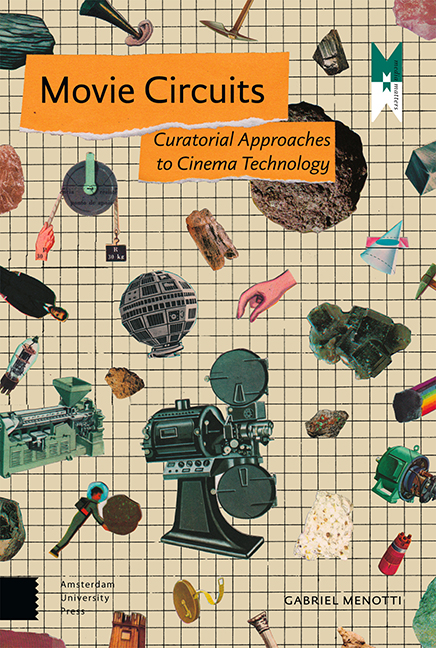Introduction: Blind Optics
Published online by Cambridge University Press: 21 November 2020
Summary
Abstract
A movie disappears right in front of the audience's eyes. What could be happening? By drawing inspiration from the unsuccessful première of the movie a knife all blade, this book acknowledges a new critical way of engaging with cinema. It champions hands-on approaches as a means to pierce through medial ideology and access the invisible side of the medium, where the bulk of technological development is accumulated and suppressed. Through the work of mediators such as projectionists and curators, the inconsistencies of the medium are therefore presented as partial but powerful keys for grasping its material reality.
Keywords: Cameraless films, discourse networks, film cultures, medial ideology
As the credits roll, one can feel the hustle of people moving around, impatient bodies readjusting in their seats. But the service lights have not gone on yet. There is still a final short to be screened in that noon session of the XV Vitória Cine-Video Festival. With the dim light of their mobile phones, some spectators check the name and duration of the piece in the printed programme they got from a pile outside the theatre. It is an experimental video entitled a knife all blade, one minute and fifty-seven seconds long. This was the first time it was going to be shown to the public. It is still open to question, though, whether it was watched at that same moment or not.
The theatre was far from empty – in fact, all of its 240 seats were filled, and there were people crowding the aisles, all over the floor. That 25 November 2008 was a day as busy as ever for the local film festival, which was in its heyday. Nevertheless, no one seemed to notice when a knife all blade started to be projected. Perhaps more surprisingly, no one took issue when, within about ten seconds, the projection was cut short. The screen went blank and the lights instantly turned on. The show was over. One by one, spectators stood up, rubbed their eyes, stretched their legs, and calmly started to leave. It was probably a relief to most of them that the last video seemed to be cut out of the session.
A plain description of what happened cannot explain what had gone wrong, if anything. Did a mechanical malfunction make the projector halt? Had some obstruction to the light precluded the image formation?
- Type
- Chapter
- Information
- Movie CircuitsCuratorial Approaches to Cinema Technology, pp. 7 - 30Publisher: Amsterdam University PressPrint publication year: 2019



